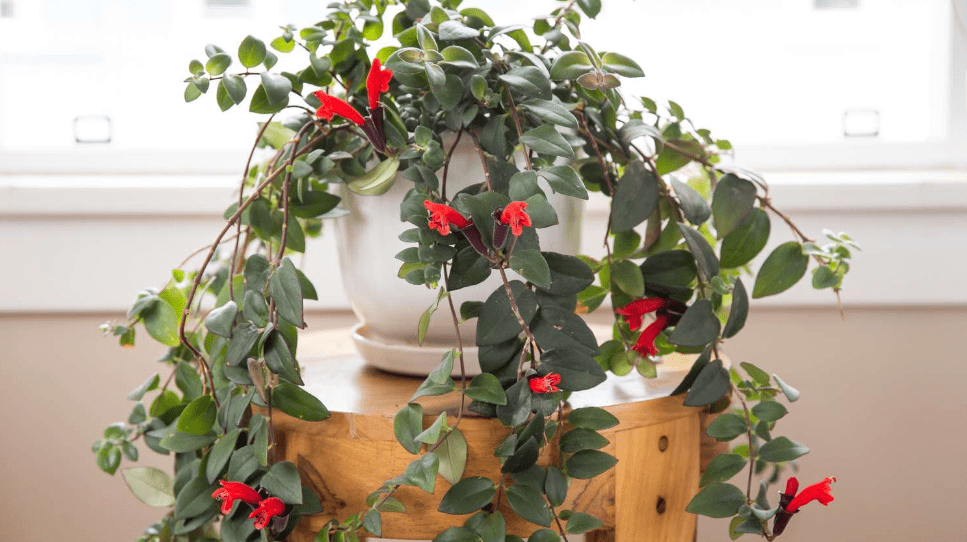
Mastering Lipstick Plant Care: Essential Techniques for Healthy Growth
Are you tired of your lipstick plant wilting and not thriving as it should? Well, look no further because this post is going to provide you with essential techniques for caring for your lipstick plant to ensure healthy growth and beautiful blooms. Whether you’re a seasoned plant enthusiast or a beginner, our tips will help you master the art of lipstick plant care. So, if you want your lipstick plant to be the envy of all your friends, keep reading and get ready to become a master at caring for your beloved plant.
Table of Contents
ToggleUnderstanding the Lipstick Plant
A. Description and Characteristics
Lipstick plants, also known as Aeschynanthus radicans, are tropical plants that are known for their vibrant red, tubular flowers that resemble a tube of lipstick. They are native to Southeast Asia and are typically grown as houseplants in other parts of the world. Lipstick plants thrive in warm and humid environments and are relatively low-maintenance, making them an ideal addition to any indoor garden.
B. Popular Varieties
There are several popular varieties of lipstick plants, each with its own unique characteristics and features. Some popular varieties include the Black Aeschynanthus radicans, Aeschynanthus pulcher, and Mona Lisa. These plants come in a range of colors, from deep reds to vibrant pinks, and they can make a stunning addition to any home or office space.

Setting Up for Success
A. Choosing the Right Plant
When it comes to choosing the right plant for your indoor garden, lipstick plants are an excellent choice. Their vibrant colors and unique growing habits make them stand out among other houseplants. When selecting a lipstick plant, look for one that has healthy, lush foliage and no signs of pests or disease. This will ensure that your plant has the best chance of thriving in its new environment.
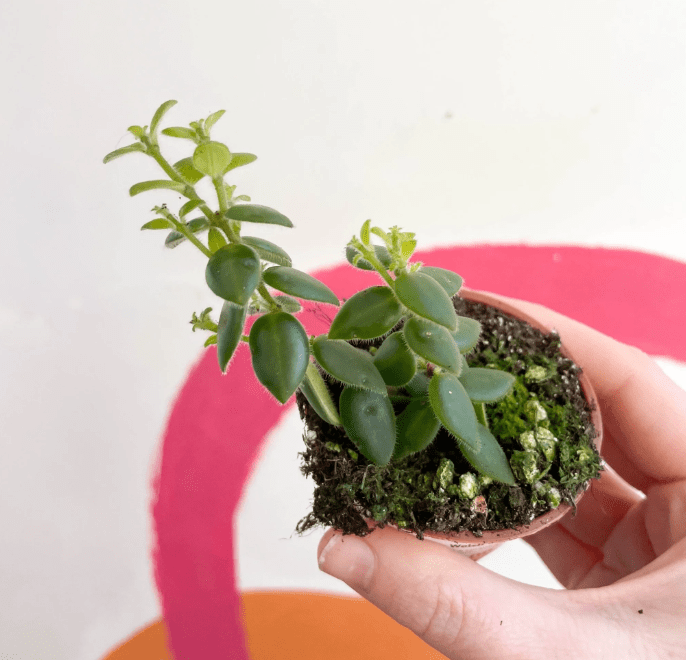
B. Ideal Pot and Soil
In order to set your lipstick plant up for success, it’s important to choose the right pot and soil. Lipstick plants prefer well-draining soil, so be sure to pick a pot with drainage holes to prevent water from pooling at the bottom. A mixture of potting soil, perlite, and peat moss is ideal for these plants, as it promotes healthy root growth and prevents waterlogged soil. This will give your plant the best chance of thriving and flourishing in its new home.
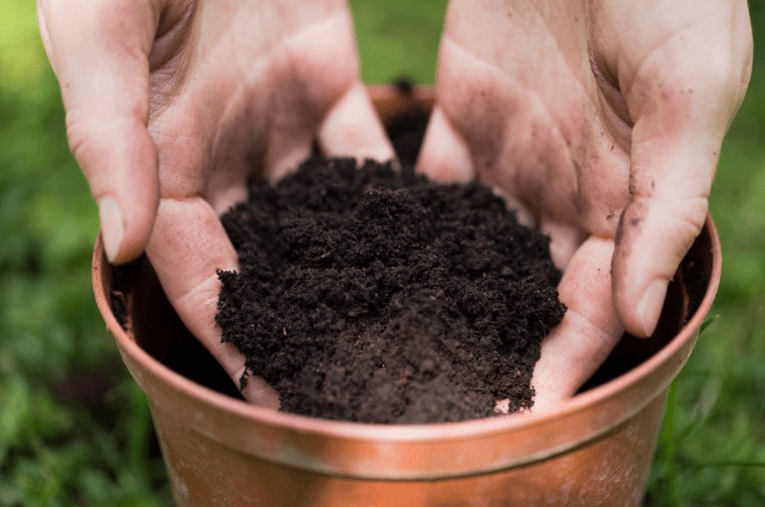
Light Requirements
A. Natural Light Needs
When it comes to providing the best environment for your lipstick plant, natural light is a crucial factor. These plants thrive in bright, indirect light, so be sure to place them in a location where they can receive plenty of sunlight without being directly exposed to harsh rays. This will enable your plant to photosynthesize and grow properly, ensuring that it remains healthy and vibrant. By providing the right amount of natural light, you’re setting your lipstick plant up for success and giving it the best chance to flourish in its new surroundings.
B. Artificial Lighting
Artificial lighting can be a great supplement to natural light for your lipstick plant. If you find that your home doesn’t have enough natural light, consider investing in a grow light to ensure that your plant gets the light it needs to thrive. There are many options for growing lights that mimic natural sunlight and can provide the right spectrum of light for optimal growth. By incorporating artificial lighting into your plant care routine, you can ensure that your lipstick plant has the best chance of flourishing and remaining healthy in its new home. Don’t underestimate the power of proper lighting – it’s essential for the well-being of your plant.
Watering and Humidity
A. Watering Schedule
Watering is a crucial aspect of caring for your lipstick plant. It’s important to establish a consistent watering schedule to ensure that your plant receives the proper amount of moisture. Overwatering or underwatering can lead to a variety of issues, so it’s essential to find the right balance.
Make sure to water your plant when the top inch of soil feels dry to the touch, and be sure to allow excess water to drain out of the bottom of the pot to avoid root rot. Additionally, consider using a spray bottle to mist the plant’s leaves with water to create the humidity that the lipstick plant thrives in.
By staying on top of a watering schedule and providing the right amount of moisture, you can help your lipstick plant stay healthy and vibrant. Don’t overlook the importance of proper watering – it’s an essential part of caring for your plant.
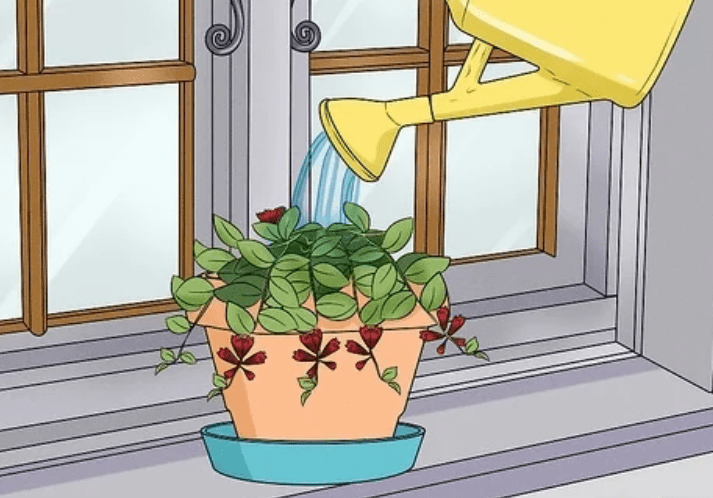
B. Humidity Needs
Remember, consistent watering is key to the health and vibrancy of your lipstick plant. Don’t risk overwatering or underwatering – find that perfect balance to keep your plant thriving. Make sure to monitor the soil moisture and provide the right amount of water when needed. And don’t forget about the importance of humidity – misting the leaves can make all the difference. Your plant deserves the best care, so be diligent with your watering schedule and watch it flourish. Your efforts will be well worth it when you see your lipstick plant thriving and looking its best.
Temperature and Environment
A. Temperature Range
The temperature range for your lipstick plant is crucial for its overall health and growth. Keep an eye on the temperature in your environment and make sure it stays within the ideal range for your plant. Too much heat or cold can be detrimental, so take the necessary steps to maintain a comfortable and consistent temperature for your plant. Creating the right environment for your lipstick plant is essential for its success, so be proactive and attentive to its needs. Your plant will thank you with beautiful, vibrant blooms and foliage.
B. Environmental Factors
When it comes to the environment for your lipstick plant, there are a few key factors to consider. First and foremost, ensure that your plant receives ample sunlight and is protected from harsh winds and extreme weather conditions. The right humidity level is also important for your plant’s health, so consider using a humidifier or misting the plant regularly to maintain optimal moisture levels. And don’t forget about the soil – make sure it is well-draining and rich in nutrients to support healthy growth.
Creating the perfect environment for your lipstick plant may take some effort, but the rewards are well worth it. With the right temperature and environmental conditions, your plant will thrive and flourish, bringing beauty and joy to your home. So, don’t skimp on providing the ideal environment for your plant – it will pay off in the long run. Trust me, your lipstick plant will thank you with stunning displays of color and vitality.
Feeding and Fertilization
A. Nutrient Requirements and Fertilization
It’s crucial to remember that your lipstick plant needs proper nourishment to thrive. Just like any living thing, it requires essential nutrients to grow and bloom to its fullest potential. So, be sure to feed your plant regularly with a balanced fertilizer to ensure it gets the vitamins and minerals it needs to stay healthy and vibrant.
Don’t underestimate the power of proper feeding and fertilization. By providing your lipstick plant with the necessary nutrients, you are investing in its long-term health and beauty. So, don’t skimp on this crucial aspect of plant care – your lipstick plant will repay you with luscious, colorful blooms and lush, green foliage.
Remember, a well-fed and properly nourished plant is a happy plant. So, take the time to give your lipstick plant the care and attention it deserves, and you will be rewarded with a stunning and thriving addition to your home. Trust me, it’s worth the effort.
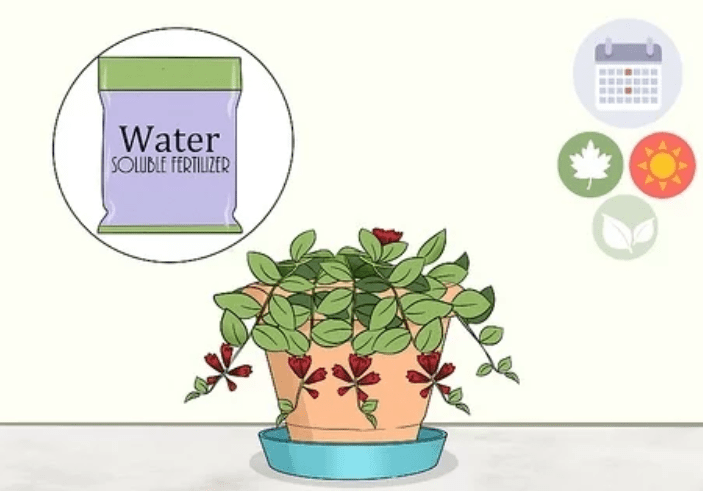
B. Signs of Nutrient Deficiency
Are you willing to let your lipstick plant suffer from lack of nutrients? I didn’t think so. By providing your plant with the proper feeding and fertilization, you are ensuring that it has everything it needs to thrive and flourish. Don’t underestimate the impact that this simple step can have on the health and beauty of your plant. Invest in its long-term well-being and you will be rewarded with vibrant blooms and lush foliage. Don’t skimp on this crucial aspect of care – your lipstick plant deserves the best. Show it the love and attention it deserves, and it will reward you with stunning growth and beauty. Trust me, it’s worth the effort.
Pruning and Maintenance
A. Pruning Techniques
Pruning is an essential part of plant care that should not be overlooked. By regularly pruning your plant, you are promoting healthy growth, preventing disease, and improving its overall appearance. Don’t be afraid to get your hands dirty and trim back any dead or overgrown branches – your plant will thank you for it. Take the time to learn proper pruning techniques and invest in the maintenance of your plant. It may seem like a small task, but the impact it will have on the health and beauty of your plant is immeasurable. Don’t neglect this important aspect of care – your plant will thrive and flourish with proper pruning and maintenance. Trust me, it’s worth it in the long run.
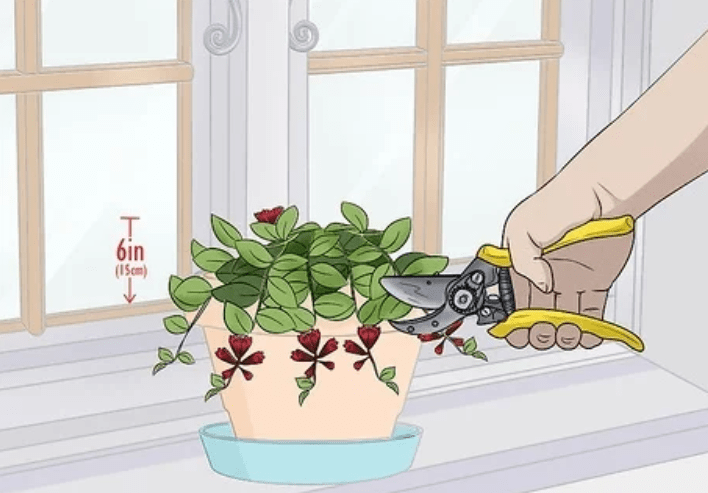
B. General Maintenance
1. Cleaning the leaves
Yes, it may seem like a simple task, but don’t underestimate the importance of cleaning your plant’s leaves. Dust and dirt can build up over time, blocking sunlight and hindering the plant’s ability to photosynthesize. Take a few moments to gently wipe down the leaves with a soft, damp cloth and you’ll be amazed at the difference it makes. Your plant will be able to breathe easier and will look healthier and more vibrant as a result. It’s a small effort with big rewards – your plant will thank you for it.
Common Problems and Solutions
A. Common pests: aphids, spider mites, and others
Aphids, spider mites can be common pests that can damage your lipstick plant. To ensure the health and beauty of your plant, it’s important to regularly inspect for these pests and take action to eliminate them. There are natural remedies and insecticidal soaps that can help keep these pests at bay without harming your plant. By being proactive and regularly maintaining your plant, you can prevent these pests from causing damage and ensure that your lipstick plant continues to thrive. Don’t let these common pests stand in the way of your plant’s beauty – take the necessary steps to keep them at bay and enjoy a healthy, vibrant lipstick plant in your home.
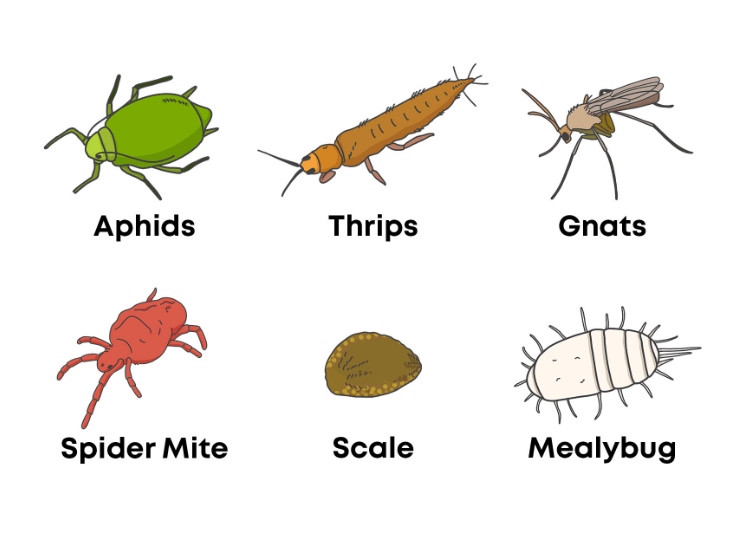
B. Disease prevention and treatment: root rot, powdery mildew
Root rot and powdery mildew are common diseases that can affect your lipstick plant. By ensuring proper watering and good air circulation, you can prevent these diseases from taking hold. If you do notice signs of disease, there are also treatments available to help save your plant. By being vigilant and taking the necessary precautions, you can keep your lipstick plant healthy and disease-free. Don’t let these common issues discourage you – with a little effort, you can enjoy a beautiful, thriving plant in your home. Your lipstick plant will thank you for it.
C. Troubleshooting
1. Identifying and solving common issues like leaf drop, lack of blooms, and yellowing leaves
Identifying and solving common issues like leaf drop, lack of blooms, and yellowing leaves can be frustrating, but with the right care and attention, you can overcome these challenges. Proper watering and good air circulation are key to preventing diseases that can cause these issues. By staying vigilant and taking the necessary precautions, you can keep your lipstick plant healthy and disease-free. And if you do notice signs of disease, there are treatments available to help save your plant. Don’t let these common issues discourage you – with a little effort, you can enjoy a beautiful, thriving plant in your home. Your lipstick plant will thank you for it.
Propagation Methods
A. Propagating from Cuttings
When it comes to propagating your lipstick plant from cuttings, it’s an easy and effective way to expand your collection of these beautiful plants. By taking a healthy cutting from a mature, established plant and carefully planting it in a well-draining soil mix, you can successfully grow a new plant. With a bit of patience and the right conditions, you’ll soon have a brand new lipstick plant to enjoy. Propagating from cuttings is a rewarding and simple process that allows you to share the beauty of these plants with others. So don’t hesitate to give it a try – you’ll be amazed at how easy it can be!
B. Other Propagation Techniques
When it comes to propagating your plants, there are a variety of methods to choose from. Whether it’s division, layering, or using plantlets, each technique offers its own unique advantages. But when it comes to simplicity and effectiveness, propagating from cuttings is the way to go.
With just a little bit of know-how and the right tools, you can easily create new plants from your existing ones. It’s an affordable and sustainable way to expand your plant collection, and it allows you to share the beauty of your plants with friends and family. Plus, there’s something incredibly satisfying about watching a new plant grow from a single cutting.
So why not give propagation from cuttings a try? It’s a rewarding process that anyone can master, and it’s a great way to get more enjoyment out of your plants. Trust me, you won’t regret it!
Seasonal Care Tips
A. Spring and Summer Care
In the spring and summer, it’s crucial to provide your plants with the right growing conditions to ensure successful propagation. Make sure to choose healthy, disease-free plants to take cuttings from, and use sharp, clean tools to make the cuts. Dip the cut ends in a rooting hormone to encourage root development, and place the cuttings in a well-draining potting mix. Keep the soil consistently moist, but not waterlogged, and provide plenty of bright, indirect light to encourage new growth. With a little attention and care, you’ll soon have a whole new batch of beautiful plants to enjoy. Don’t miss out on the satisfaction and joy of propagating your own plants – give it a try this spring and summer!
B. Fall and Winter Care
In the fall and winter, it’s important to give your plants the proper care to help them thrive during the colder months. Make sure to clean up any dead or decaying plant material, and provide a layer of mulch to insulate the soil and protect the roots from freezing temperatures. Bring any potted plants inside or to a sheltered area to protect them from harsh winter conditions. Water your plants sparingly, as they require less moisture during the dormant season, and make sure to provide ample sunlight for any indoor plants. With a little extra effort, you can ensure that your plants make it through the fall and winter and emerge healthy and vibrant in the spring. Don’t neglect your plants during the colder months – they deserve the same care and attention year-round. Give them the best chance for success and enjoy a beautiful, thriving garden all year long.
In conclusion, mastering the care of your lipstick plant is essential for ensuring its healthy growth and beautiful blooms. By following the techniques and tips provided in this post, you can become a confident and successful plant caretaker. Remember, the key to successful plant care is consistency and attention to detail. With the right knowledge and dedication, you can create a thriving environment for your lipstick plant to flourish. So, don’t wait any longer, start implementing these techniques and watch your lipstick plant thrive!
Frequently Asked Questions (FAQs)
he best way to water a lipstick plant is to let the top inch of soil dry out before watering. Make sure to water thoroughly, but allow excess water to drain out of the bottom of the pot to prevent root rot.
Lipstick plants thrive in bright, indirect light. Avoid placing them in direct sunlight, as this can cause their leaves to burn.
A well-draining, peat-based potting mix is ideal for lipstick plants. This will help prevent water from pooling around the roots and promote healthy growth.
Fertilize your lipstick plant with a balanced, water-soluble fertilizer every 2-4 weeks during the growing season (spring and summer). Be sure to follow the instructions on the fertilizer package for best results.
Yes, lipstick plants can be propagated through stem cuttings. Simply take a 4-6 inch cutting from a healthy, mature plant and place it in a moist, well-draining potting mix. Keep the cutting in a warm, humid environment and roots should begin to develop within a few weeks.
Mealybugs, spider mites, and aphids are common pests that can affect lipstick plants. Keep an eye out for any signs of infestation and treat them promptly with insecticidal soap or neem oil. Additionally, overwatering can lead to root rot, so it’s important to ensure the plant’s soil is well-draining.
Lipstick plants typically only need to be repotted every 2-3 years, or when their roots have outgrown their current pot. When repotting, choose a pot that is only slightly larger than the plant’s current one to prevent overwatering.
To encourage blooming, ensure your lipstick plant is receiving adequate sunlight and is being fertilized regularly during the growing season. Additionally, maintaining a consistent watering schedule and providing a warm, humid environment can also help promote flowering.
